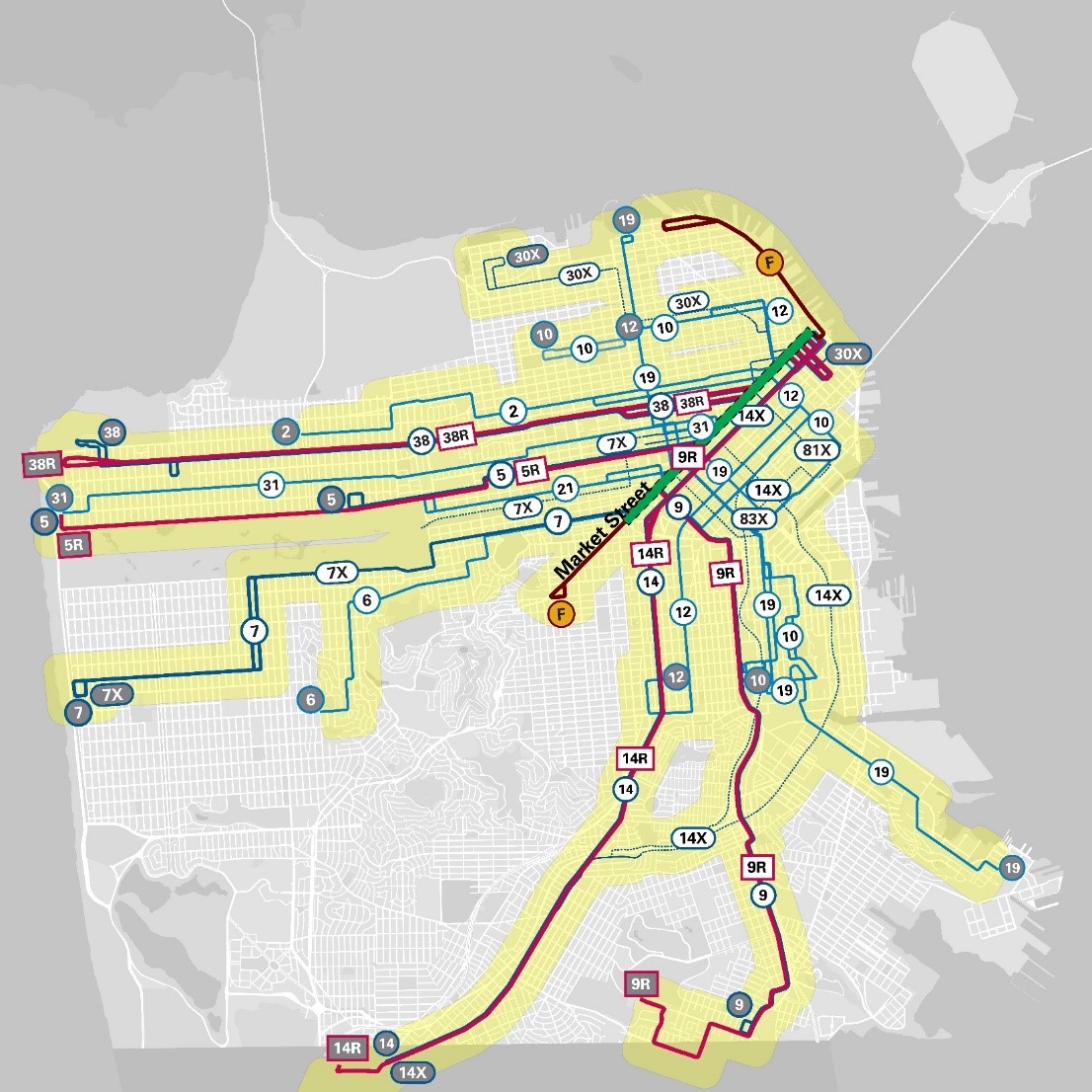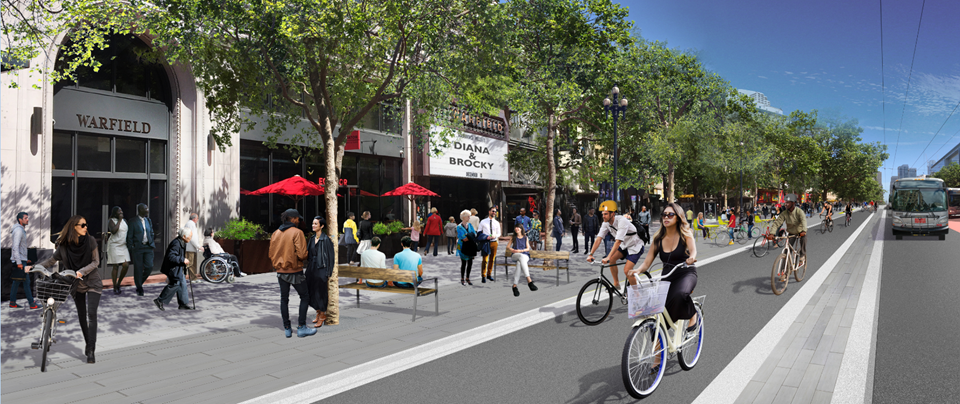By Phillip Pierce
Better Market Street is set to transform our city’s busiest street for people walking, biking and riding transit over the next few years, but we don’t need to wait for construction to make it safer and improve Muni.
Starting on January 29th through our Quick-build program, Market Street will become car-free eastbound from 10th to Main and westbound from Steuart to Van Ness. In addition to restricting private vehicles, the quick-build includes extending Muni only lanes, new loading zones and much-needed intersection safety improvements.

Figure 1: Map of changes coming late January 2020. Figure 4: Rendering including Better Market Street’s sidewalk level bike lane, new trees and improved streetscape elements.

Figure 2: Share of injury collisions by travel mode on Market Street since 2014
In addition to safety benefits, going car-free on Market will prioritize transit on a street that sees upwards of 200 buses per hour during peak times. With bus lines branching throughout San Francisco, boosting Muni's reliability on Market street will positively affect the whole city!

Figure 3: Map showing all surface Muni routes that use Market Street for a portion of their route. Improving the functionality of Market will help enhance transit to many parts of the City.
Quick-build Elements starting in January: Full Details
While Market Street officially becomes car-free on January 29th, other changes listed below are set to be implemented over the first few months of 2020.
Vehicle Changes
- No private vehicles allowed on Market Street eastbound from 10th to Main and westbound from Steuart to Van Ness -- including app-based ride hail companies like Uber/Lyft.
- All traffic can continue to cross Market street at intersections.
- Vehicles with commercial plates, taxis, emergency vehicles and paratransit will still be able to use Market Street.
- Vehicle direction changes for sections of Ellis, Jones, Second and Steuart streets to improve safety and vehicle circulation (see map in Figure 1 for details).
- Right turns onto Valencia from eastbound Market Street will no longer be allowed, Page Street will become a bike-only connection to and from Market Street.
Transit Enhancements
- Extending existing transit-only lane east from Third to Main Street, the segment of Market with the most transit service, and making it Muni-only (taxis and non-Muni buses will no longer be allowed in center lane)
- Converting the existing red transit-only lane to Muni-only between 9th and Third streets
- Converting the existing red transit-only lane to Muni & taxi only between 12th and 9th streets
- Buses in the curb lane will benefit from the car-free restrictions as well
Loading Changes
- 100 new cross-street passenger and commercial loading zones to accommodate safe loading
- Peak hour loading restrictions on Market Street to reduce conflicts between people on bicycles, transit and commercial vehicles:
- No southside loading in the eastbound direction (towards the Ferry Building) on weekdays 6:00 am to 9:30 am.
- No northside loading in the westbound direction (towards Twin Peaks) on weekdays between 3:00 pm and 7:30 pm.
Additional Safety Improvements
- Installing painted safety zones at eight intersections to make crossing the street safer and shorter
- New bicycle intersection improvements at Eighth, Page, Battery, and Valencia streets.
Project Information
Quick-build is just the first step in implementing Better Market Street, the City’s multi-agency project to transform 2.2 miles of Market Street from Octavia Boulevard to Steuart Street. The project’s goal is to enhance safety and accessibility, improve transit performance, replace aging infrastructure, and revitalize the corridor’s streetscape.
Construction on the full project will be managed by Public Works and is expected to start in late 2020 or early 2021. For project details, please visit bettermarketstreetSF.org

Figure 4: Rendering including Better Market Street’s sidewalk level bike lane, new trees and improved streetscape elements.
Published January 01, 2020 at 01:24AM
https://ift.tt/2QaLtD1
Nhận xét
Đăng nhận xét